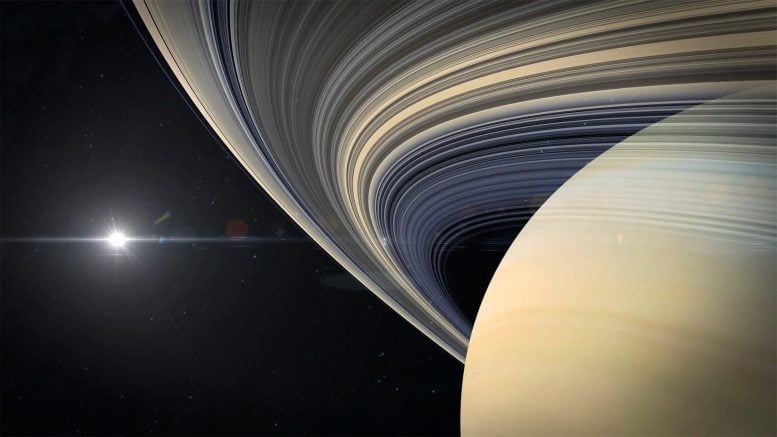
Saturn, the sixth planet from the Sun, is renowned for its stunning system of rings composed of ice and rock particles. It’s the second-largest planet in our solar system, surpassed only by Jupiter.
Saturn will be in opposition on August 26-27, 2023, appearing brighter. With the right equipment, viewers can discern its rings. Additionally, a Super Blue Moon will occur on August 30, 2023.
Saturn will be located directly opposite of the Sun – at opposition – on August 26-27, 2023, as the Earth orbits between the two. From our vantage point, the Sun’s illumination will allow Saturn to appear bigger and brighter in the sky in the weeks leading up to and after the opposition. In fact, Saturn remains visible until February 2024, so don’t worry if your local weather doesn’t cooperate with your viewing plans on any particular day.
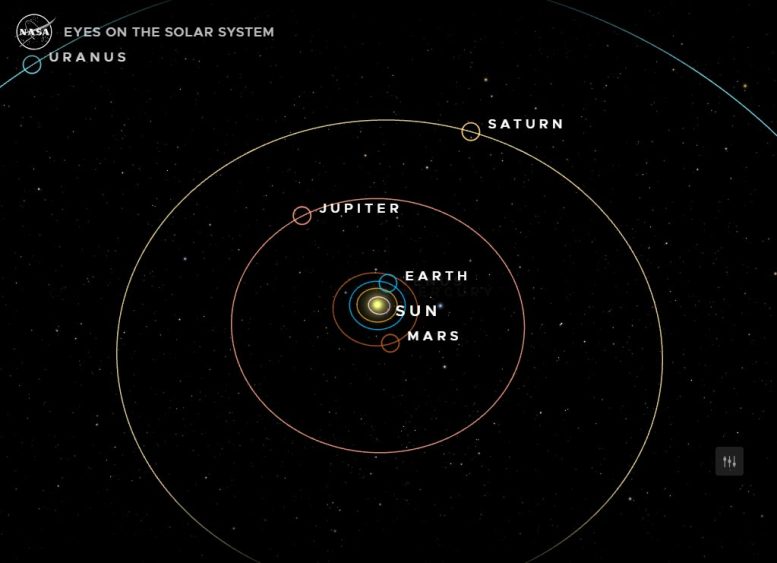
Saturn is the sixth planet from the Sun and the second-largest planet in our solar system. Like fellow gas giant Jupiter, Saturn is a massive ball made mostly of hydrogen and helium. Saturn is not the only planet to have rings, but none are as spectacular or as complex as Saturn’s. Credit: NASA Solar System
Unaided Eye
Saturn is the farthest planet from Earth easily visible by the unaided human eye. It will appear on the southeastern horizon at sunset and you can spot the bright yellowish “star” all through the night until sunrise. Although you won’t be able to view any distinguishing features, like the famed icy rings without an aid, opposition is the brightest the planet will appear – pretty good for something over 800 million miles away!
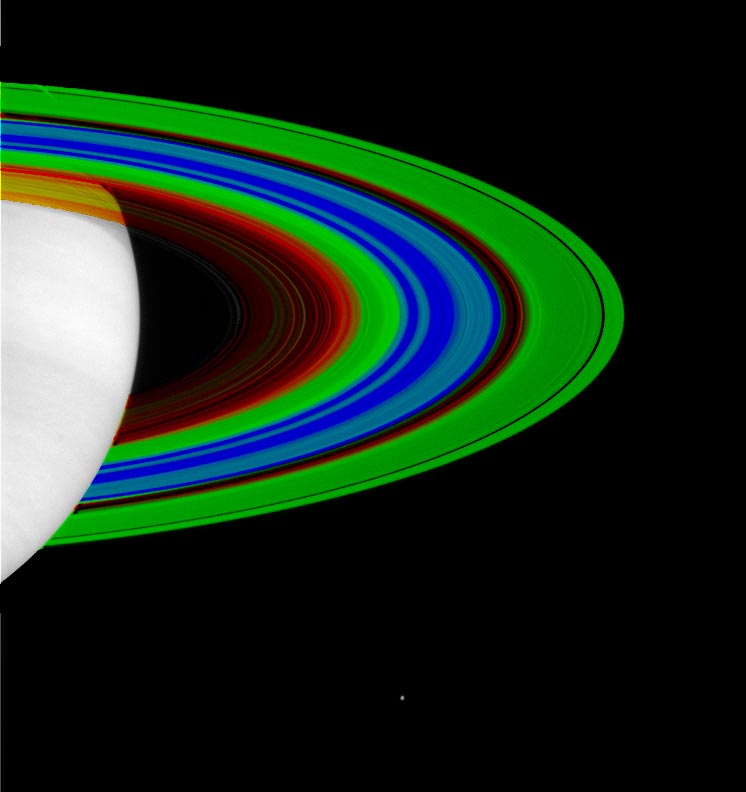
The varying temperatures of Saturn’s rings are depicted in this false-color image from the Cassini spacecraft. This image represents the most detailed look to date at the temperature of Saturn’s rings. Credit: NASA/JPL/GSFC/Ames
Binoculars
Viewing Saturn through binoculars will enhance its golden color and depending on your binoculars, allow you to make out a hint of the telltale rings, appearing more like “ears”. If you have dark, clear viewing conditions, you may also be able to observe Saturn’s largest moon Titan through your binoculars.
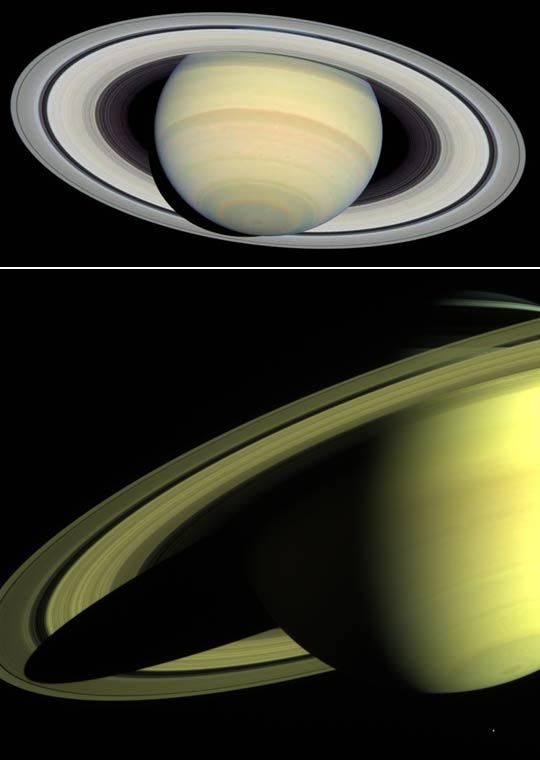
The top image is a view from NASA’s Earth-orbiting Hubble Space Telescope taken on March 22, 2004. Camera exposures in four filters (blue, blue-green, green, and red) were combined to form the Hubble image and render colors similar to what the eye would see through a telescope focused on Saturn. The Cassini-Huygens spacecraft returned the bottom image of Saturn on May 16, 2004, when its imaging science subsystem narrow-angle camera was too close to fit the entire planet in its field of view. Credit: Hubble: NASA, ESA and Erich Karkoschka (University of Arizona), Cassini: NASA/JPL
Telescope
As is true with other celestial objects, a telescope will vastly improve what and how much you are able to see. Even a small telescope will allow you to see more details of Saturn’s rings. Of all the planets that can be observed, many astronomers encourage a Saturn-viewing in everyone’s lifetime. Even a modest magnification can provide a unique experience.
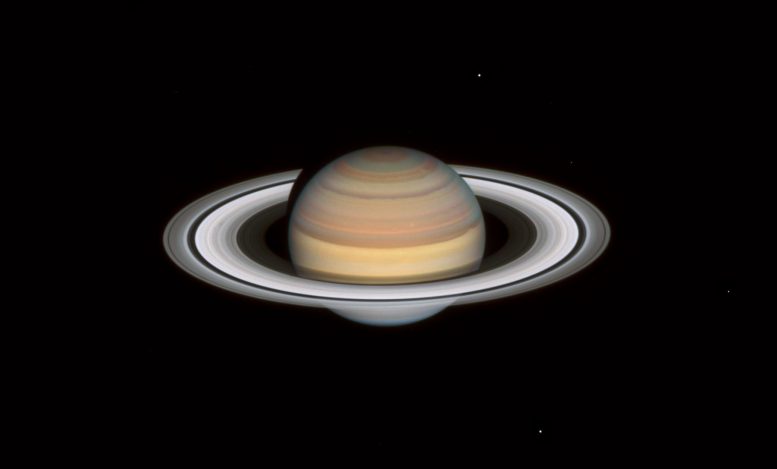
Hubble’s look at Saturn on September 12, 2021, shows rapid and extreme color changes of the bands in the planet’s northern hemisphere, where it was early autumn. The bands have varied throughout Hubble observations in both 2019 and 2020. Credit: NASA, ESA, A. Simon (NASA-GSFC), and M. H. Wong (UC Berkeley); Image Processing: A. Pagan (STScI)
Bonus Viewing
Opposition not only makes for a slightly bigger and brighter appearing planet, but as you watch the skies over the next week, you’ll also be treated to a waxing gibbous moon leading up to the Super Blue Moon on August 30, 2023. A supermoon occurs when the Moon’s orbit is closest (perigee) to Earth at the same time the Moon is full, causing the Moon to appear slightly larger and brighter than a regular full moon. A blue moon is the second full moon in a month.
Happy skygazing!

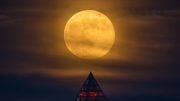



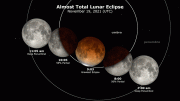

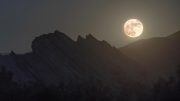
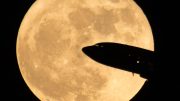
Be the first to comment on "Ring Side Seats: Three Ways To Witness Saturn’s 2023 Opposition"